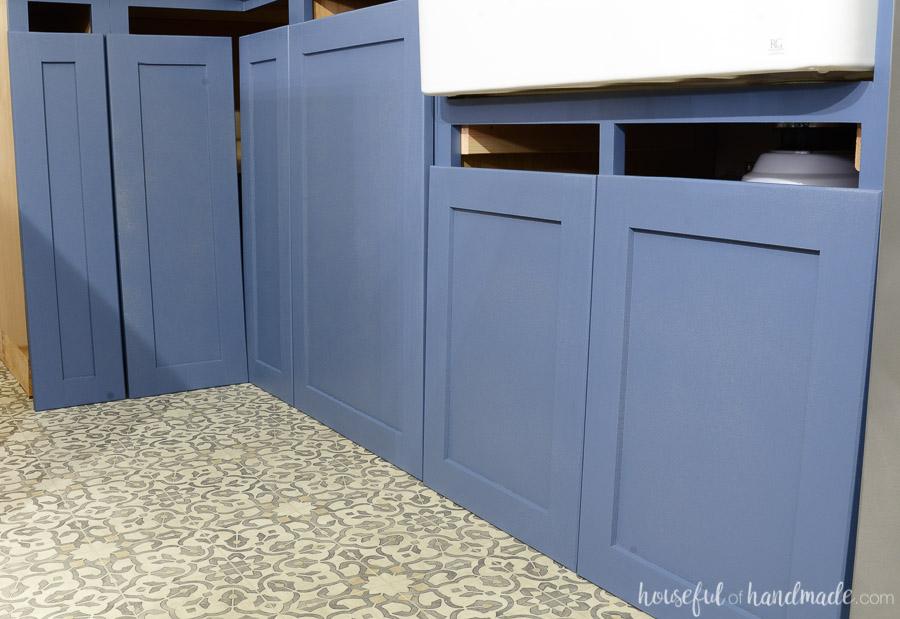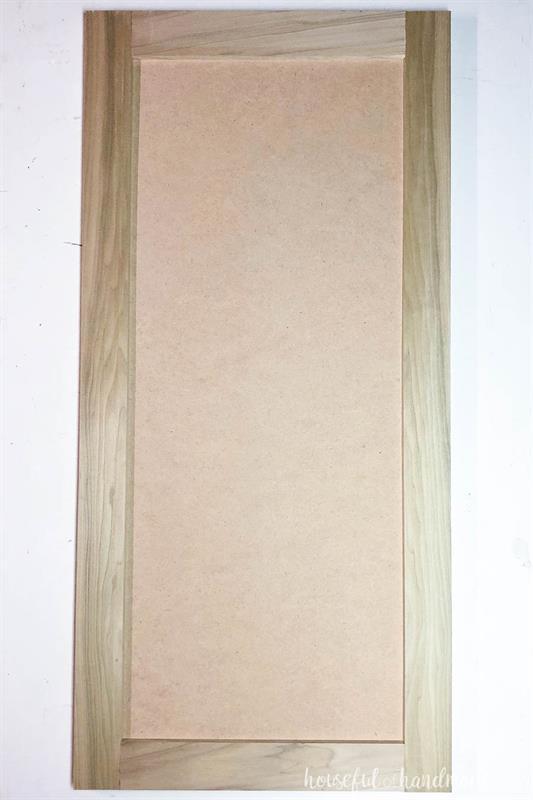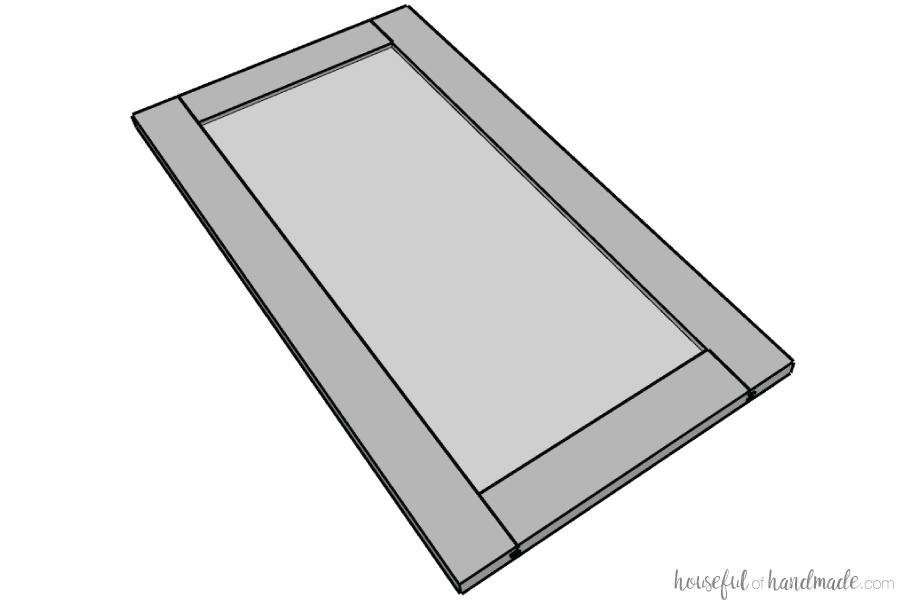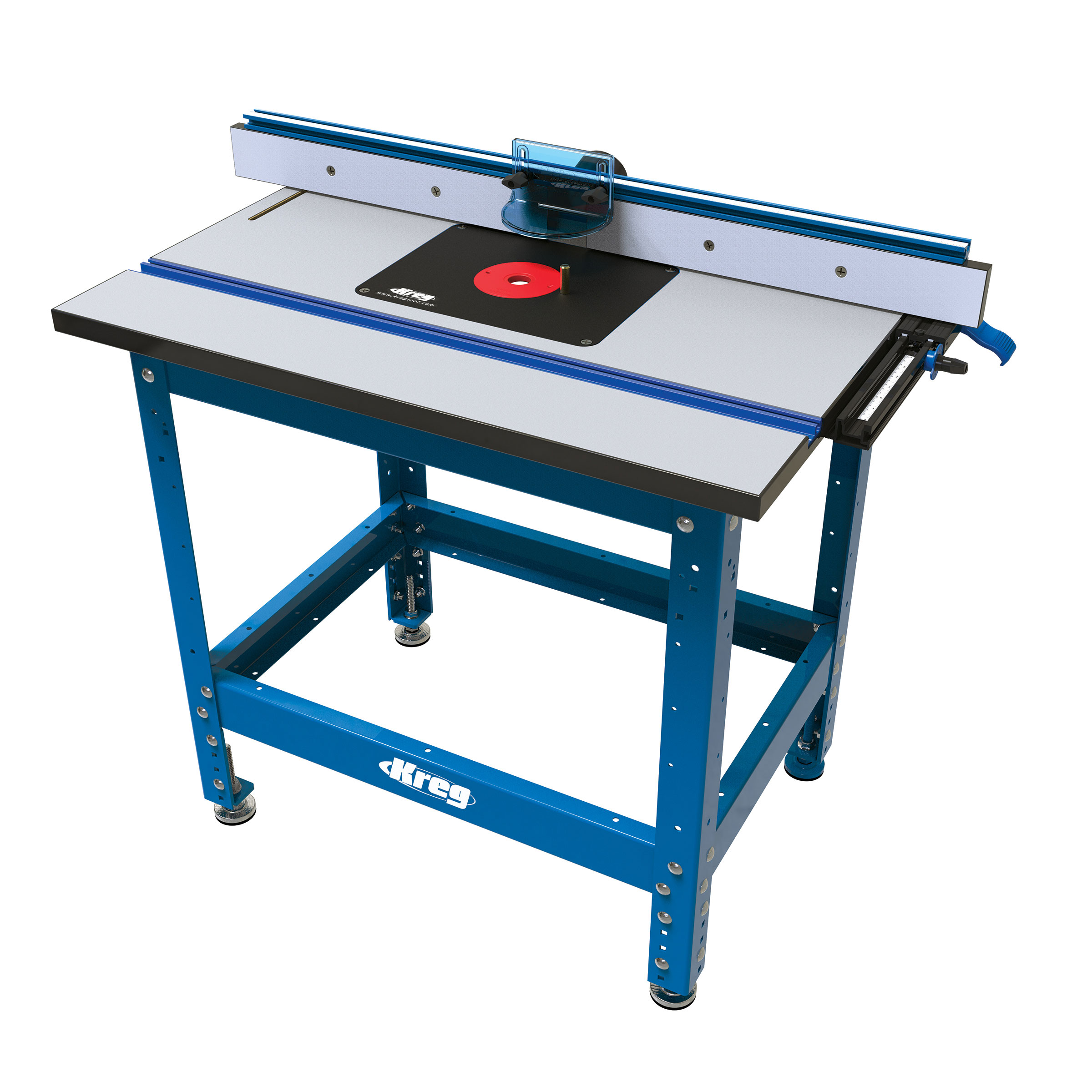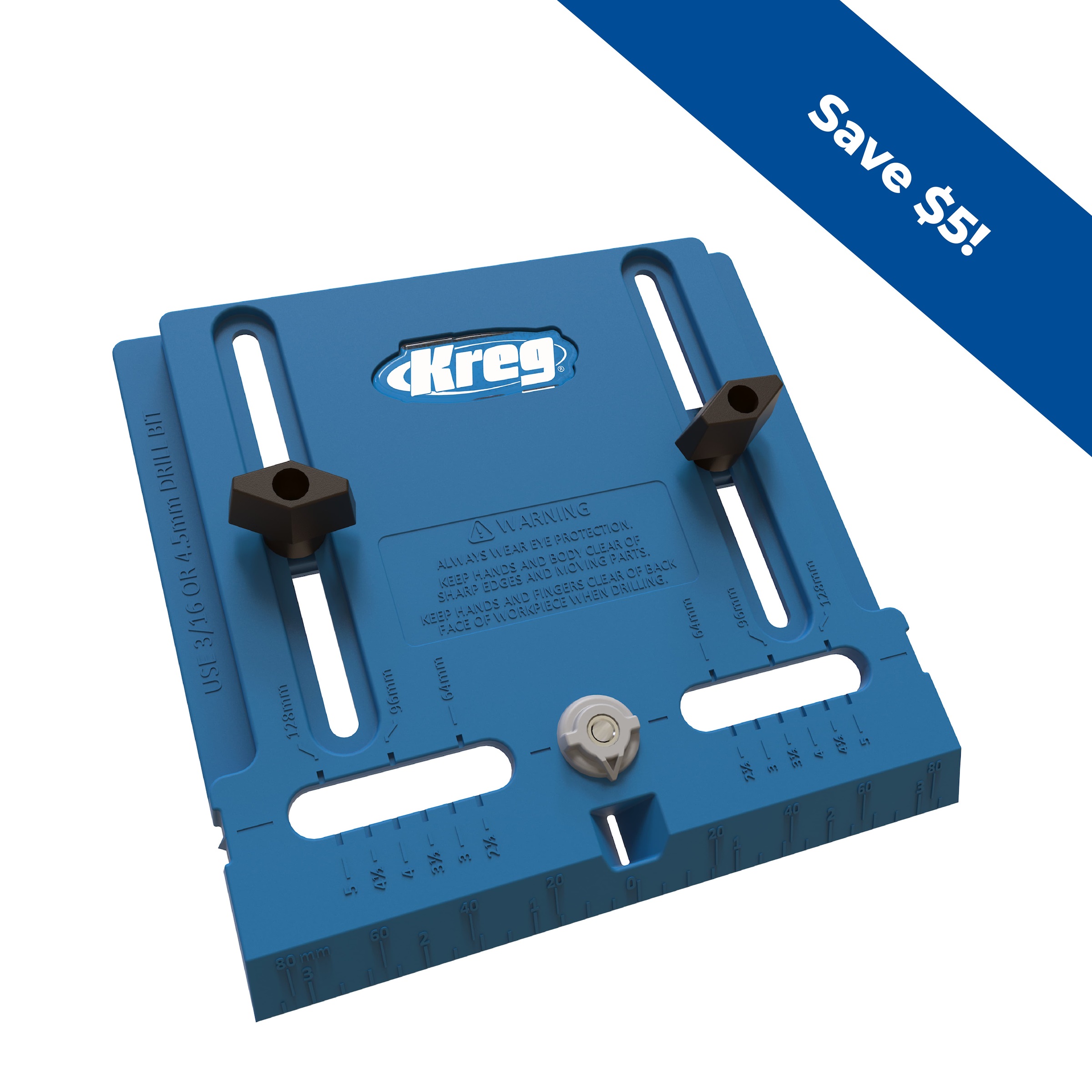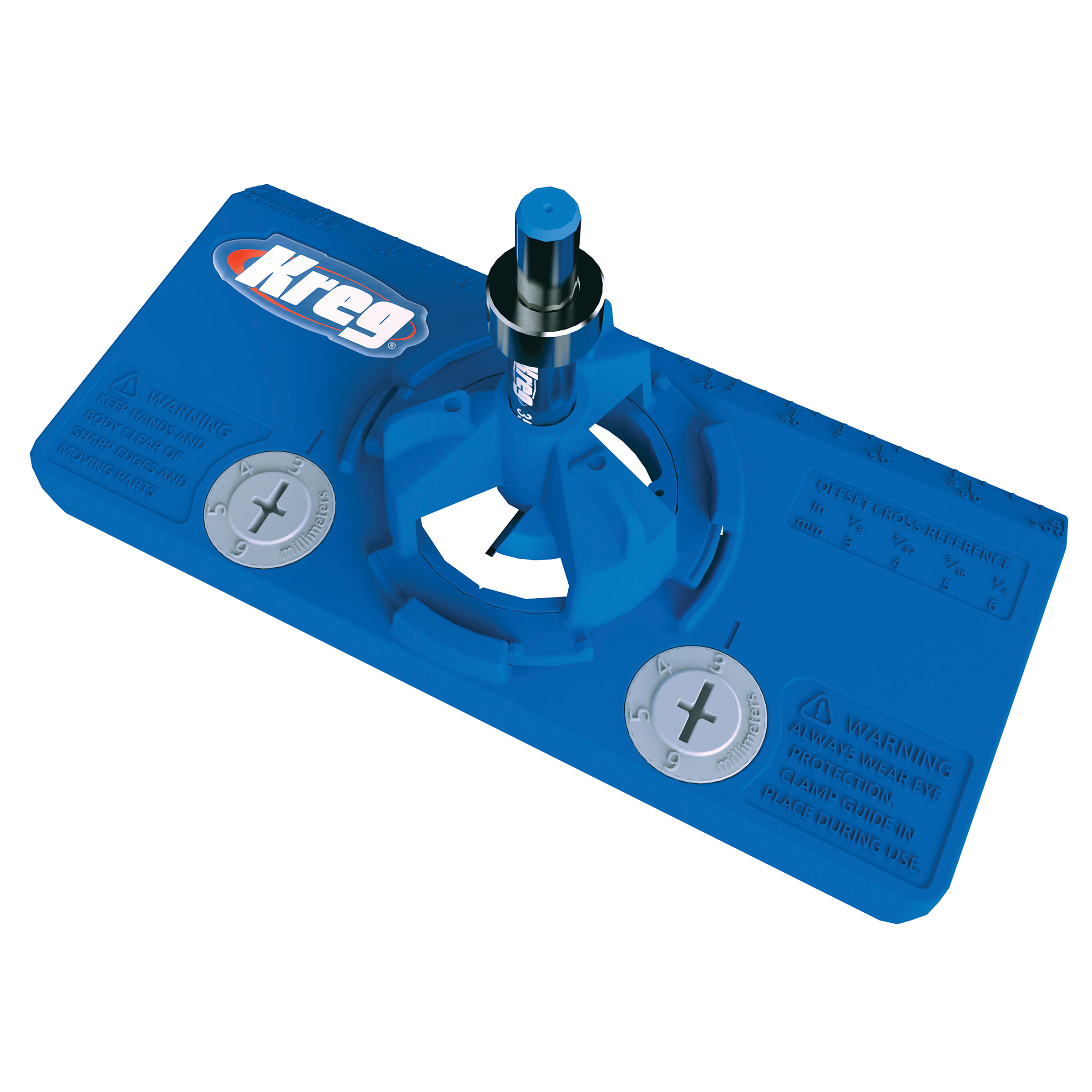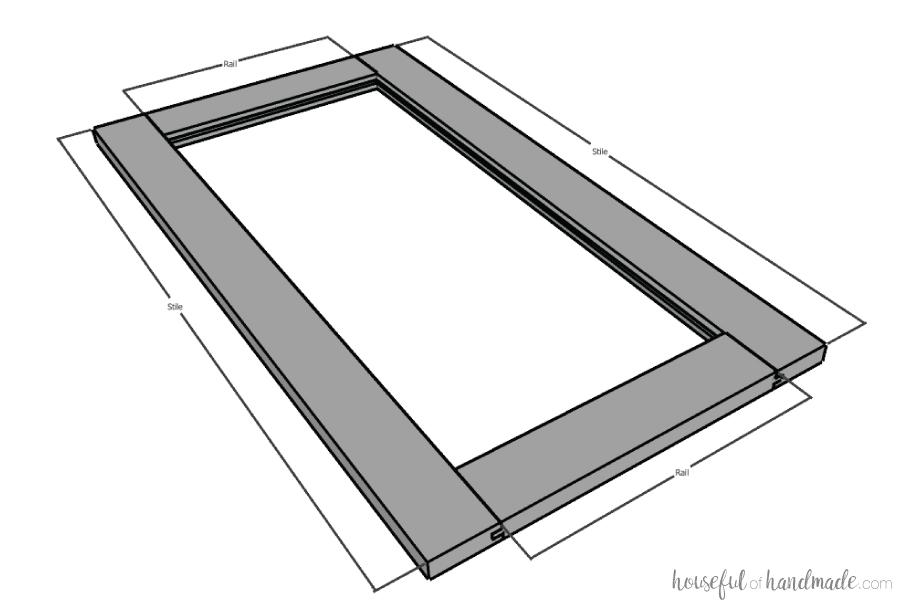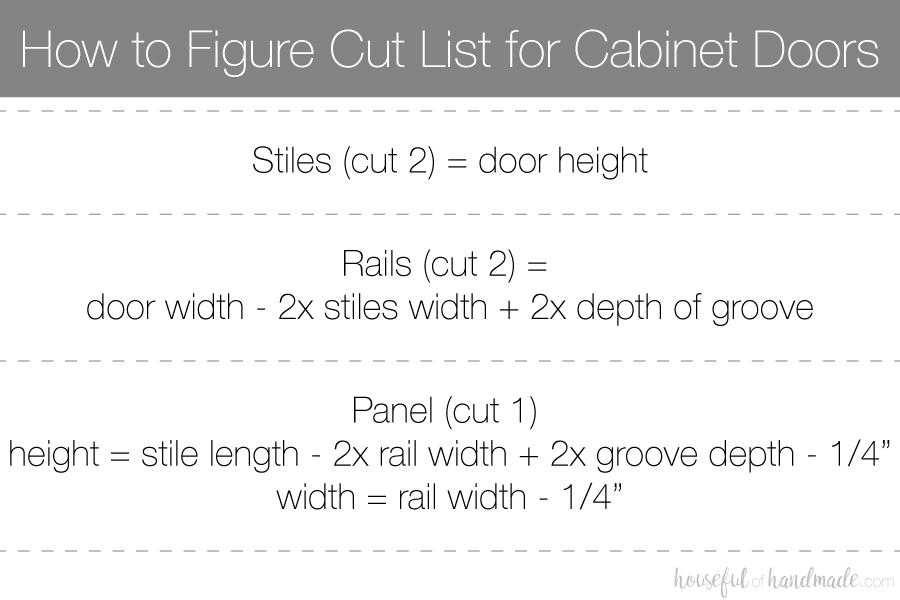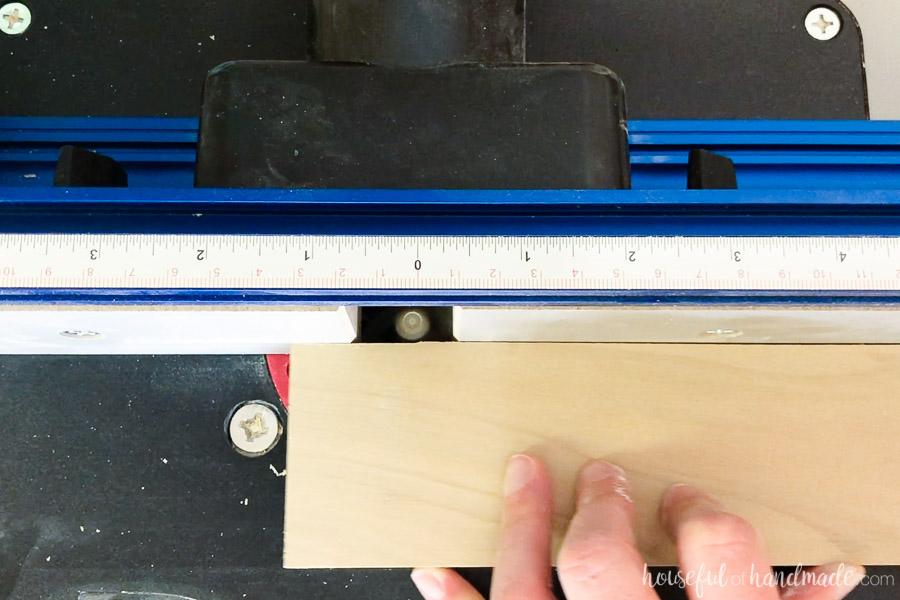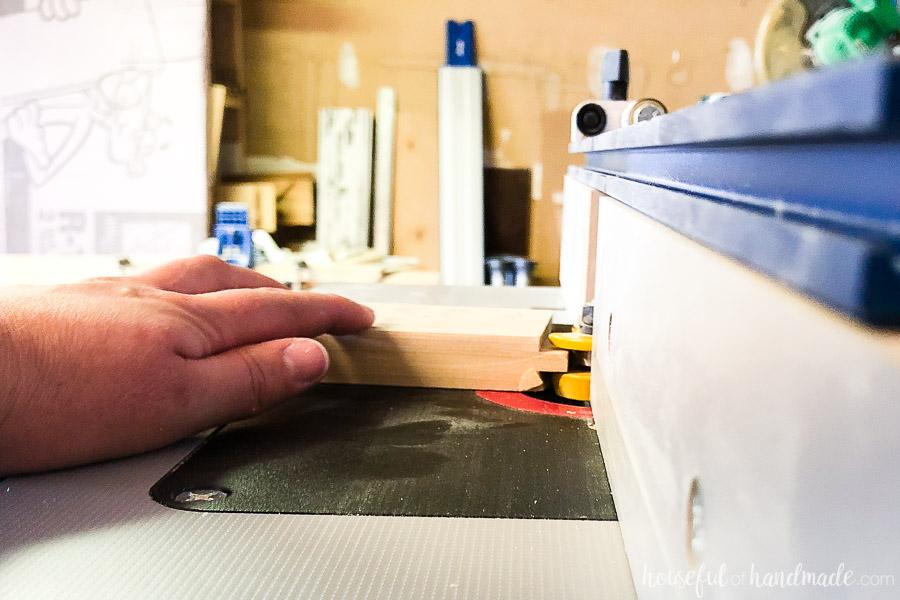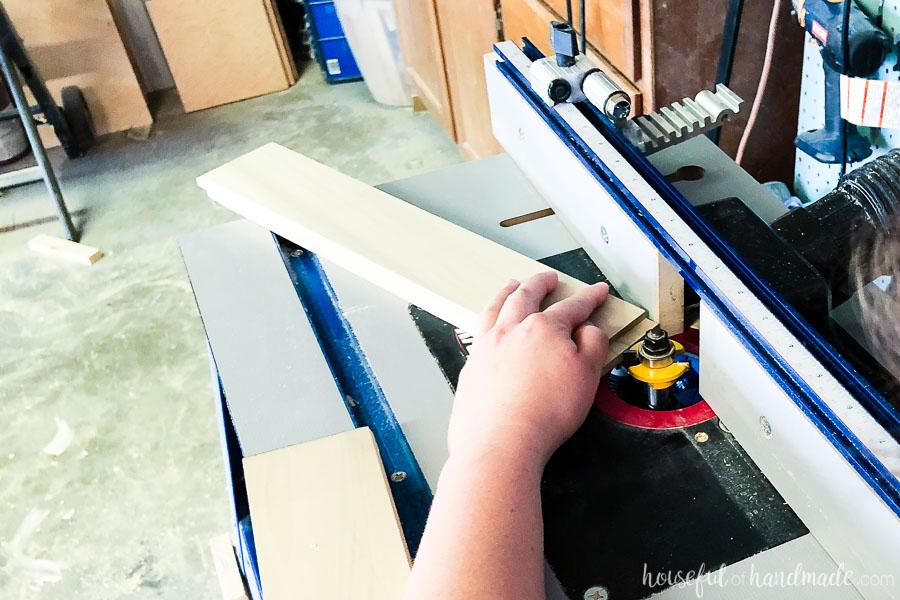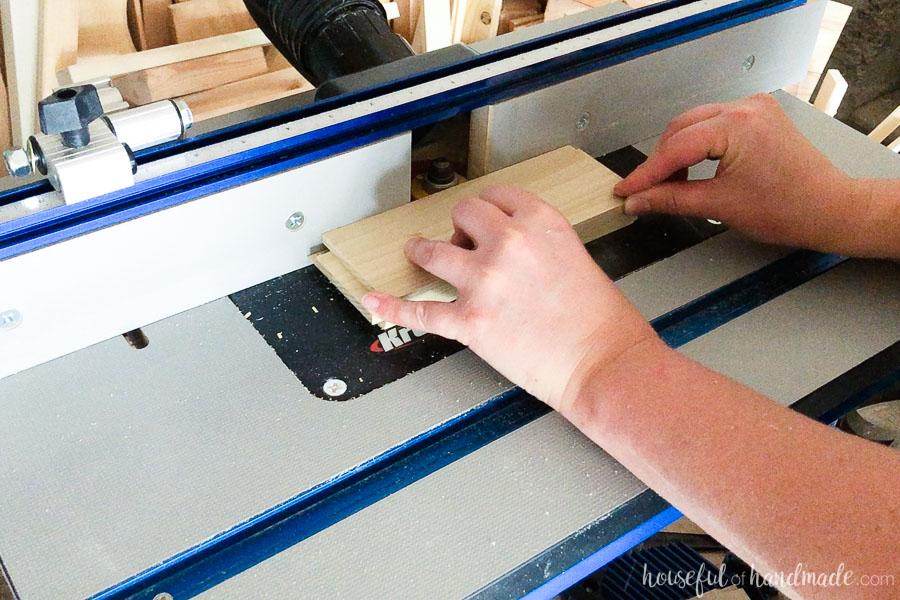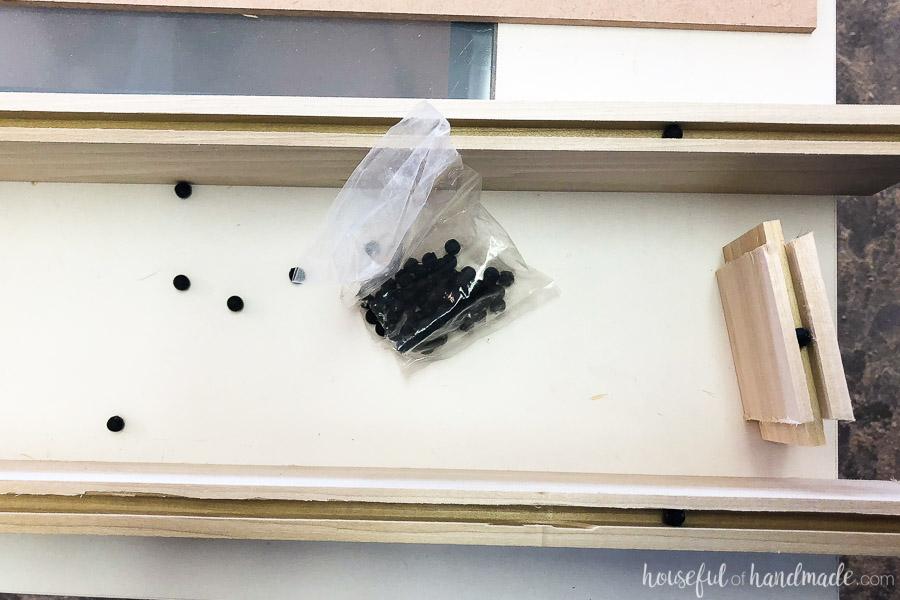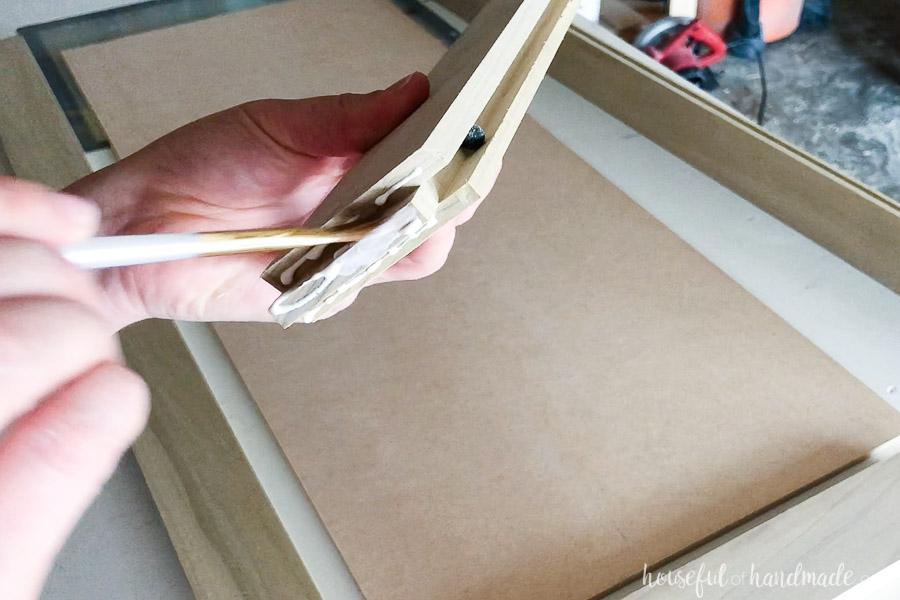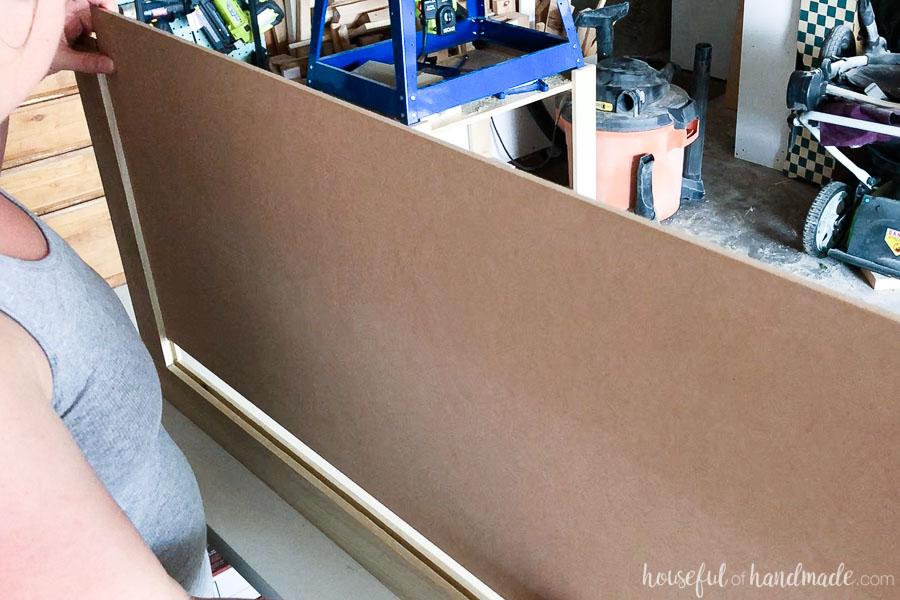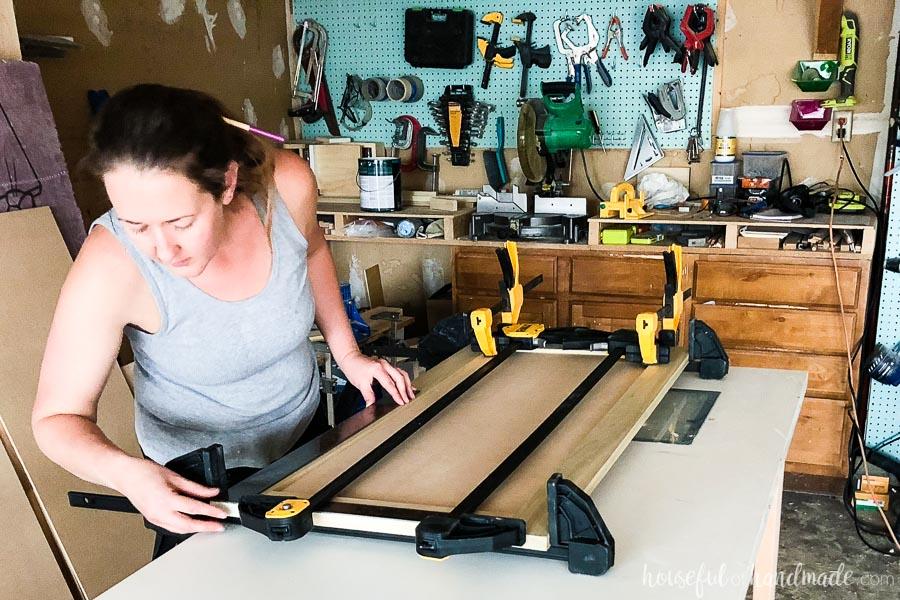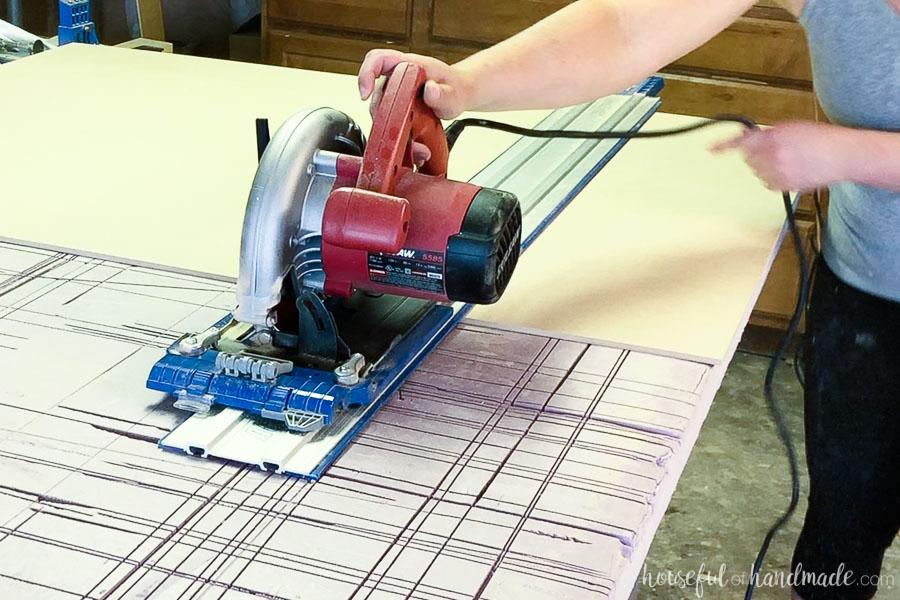How To Make Cabinet Doors With a Router Table – Free Project Plan
By Houseful of HandmadeCreate strong and beautiful cabinet doors easily with the Kreg router table and your favorite router. Building new cabinet doors is a great way to transform existing cabinets or the perfect way to finish off building your own cabinetry.
Directions
-
Cabinet router bits
To build the cabinet doors with your router you will need cabinet door router bits. You can find these in a variety of styles from decorative to raised panel to shaker. I love the simplicity of the shaker style door and that is what we built for our kitchen. These bits will allow you to router the rails to fit inside the stiles as well as create the perfect groove for the panel to sit inside.
-
Determine the size of your doors
Once you have determined the size of your doors, it is time to figure out the size of your rails & stiles. You can choose any width you prefer. My doors were made with 2 1/2" wide rails & stiles. Measure cabinets you like to see what widths to do your doors. The stiles are cut to the length of cabinet door height. The rails are cut to the length of the cabinet door width - 2x the stiles width + 2x the depth of your router bit groove. For example: a 36" x 20" door with 2 1/2" wide frame and router bits with a 3/8" groove would have stiles cut to 36" and rails cut to 15 3/4". To determine the size of you panel, height is stile length - 2x the rails width + 2x router bit groove width - 1/4". Panel width is rails length - 1/4".
-
Cut your wood
Cut your stiles & rails. I used my table saw to rip the wood down to my desired size + 1/16". Then I used the jointer feature of the Kreg router table to square up the edges of all my boards. I set the jointer to 1/32" and took that off each side of the stiles & rails boards.
-
Set up router for ends of rails
Set up your router table with the cabinet door router bit that cuts the rabbet in the ends of the rails. Raise or lower your router until the rabbet is centered on your rails where you want the panel to fit. Make sure you note whether the top or the bottom of the router bit cuts the top or bottom of the rail. For my router bit, the top of the door was the surface of the wood touching the top of the router table (so it was upside down when cutting). Once you have your router bit positioned, lock it into place then do a test cut to verify it. Keep the test cut handy if you need to realign the bits again later.
-
Router ends of rails
Carefully run the ends of each of the rails through the router. To prevent blowout on this grain end, use a scrap piece of wood places flush against the edge of the rails when routering. Also, make sure to keep the board the same for each end so that the top is the same on both sides.
-
Set up router for cutting groove
Set up your router table with the cabinet door router bit that cuts the groove in the center of the rails & stiles. Raise or lower your router until the groove is centered on your rails where you want the panel to fit and matches the rabbet that was cut out of the stiles. Make sure you note whether the top or the bottom of the router bit cuts the top or bottom of the rail again. Once you have your router bit positioned, lock it into place then do a test cut. Dry fit the test cut into the rabbet on the rails and adjust as needed until the two pieces fit together flush.
-
Router groove in rails & stiles
Run the center of all the rails & stiles through the router table. Keep a slow and steady pace to allow the router to cut cleanly. Again, make sure to pay attention to the top of the pieces so you router the correct side. I like to lay out the door on my work surface so I can make sure each piece is properly routered.
-
Add space balls to groove
The center panel should not be glued into the groove or your door might crack or split as the wood expands & contracts over time. To keep the panels from moving and rattling in the groove, add a couple space balls to each groove before assembly.
-
Add glue to the rails
Apply wood glue all over the rabbet on the ends of the rails. I use a small paint brush to make sure the glue I adequately over the entire surface.
-
Assemble the door
Slide the glued end of each rail into the groove on one of the stiles. Make sure the edges are flush. Then slide the panel into the groove. Add glue to the other ends of the rails and slide the other stile on to it, making sure to slide the panel into the groove.
-
Check for square
Lightly clamp the door. I like to use bar clamps. Clamp each door across the rails and the stiles (4 clamps total). If your clamps are not long enough, you can use 2 clamps to stretch the distance. Once the clamps are lightly clamped, check the door for square and adjust as necessary. Then tighten the clamps fully. Allow the glue to dry.
-
Finish the door
After the glue is dry, remove the clamps. Sand and finish the door panels as desired. Use the Kreg concealed hinge jig to easily apply hinges and the cabinet hardware jig to install knobs and pulls on your new cabinet doors. We are still in the process of getting all the cabinets in our kitchen done, but here is a preview of how it will look once all the doors are painted and installed.
-
Cut the door panel
If you are planning on painting your cabinet doors, you can use 1/4" MDF for panels, if you plan to stain them, choose 1/4" plywood to match the wood for your rails & stiles. I love using the AccuCut to easily rip down the large plywood sheets.



